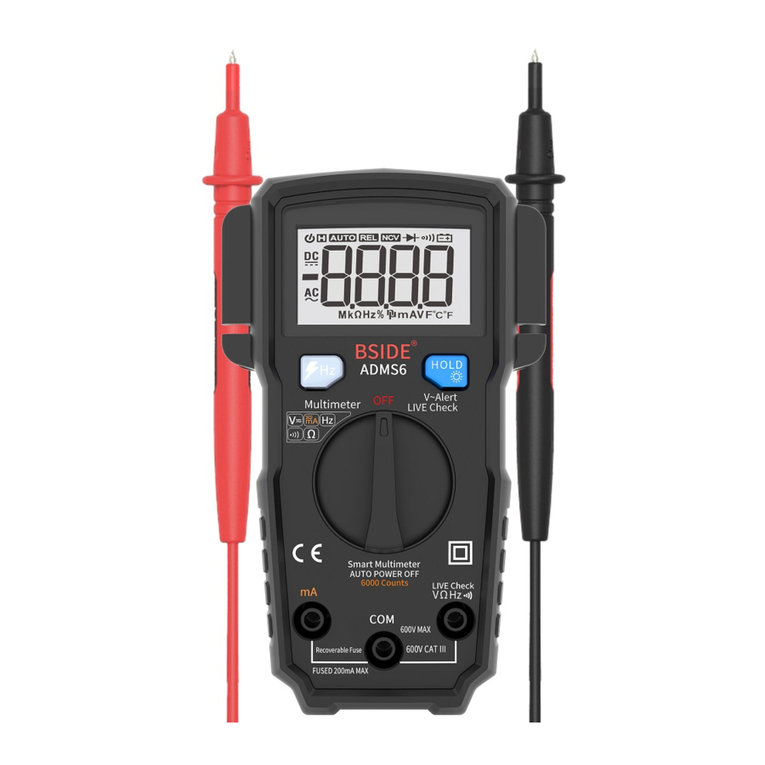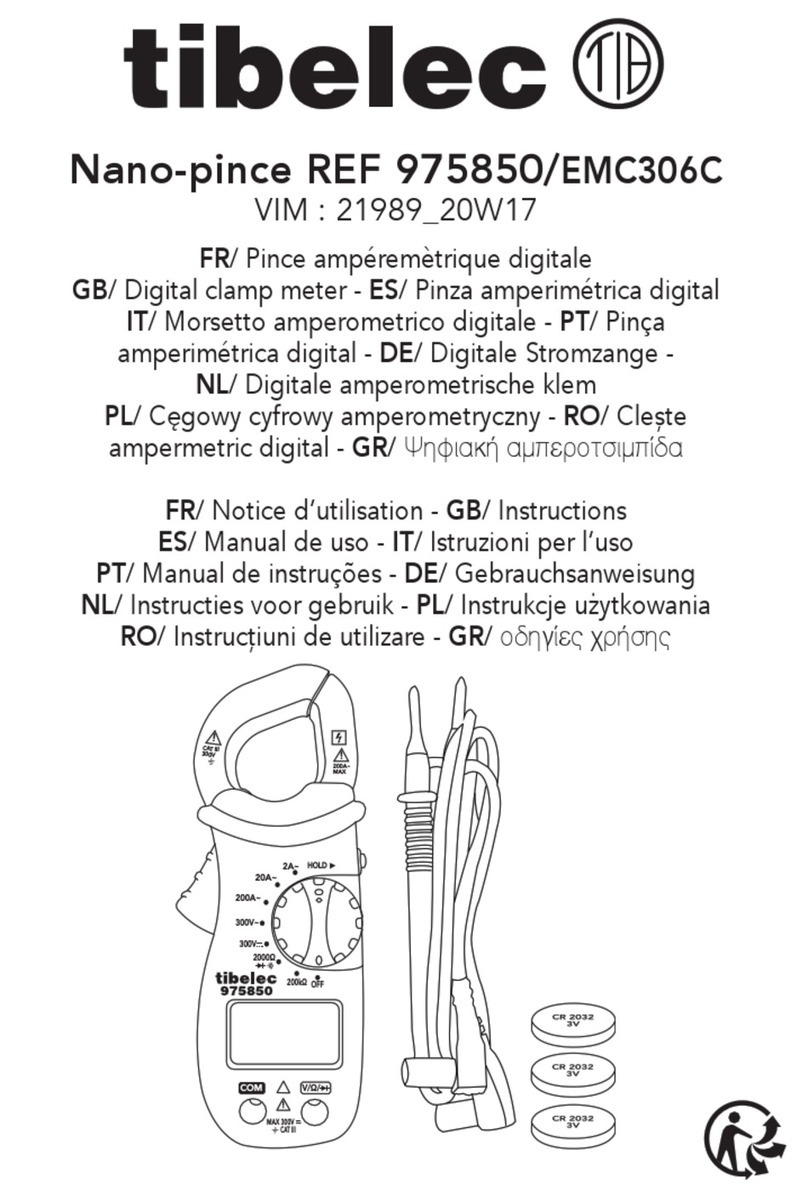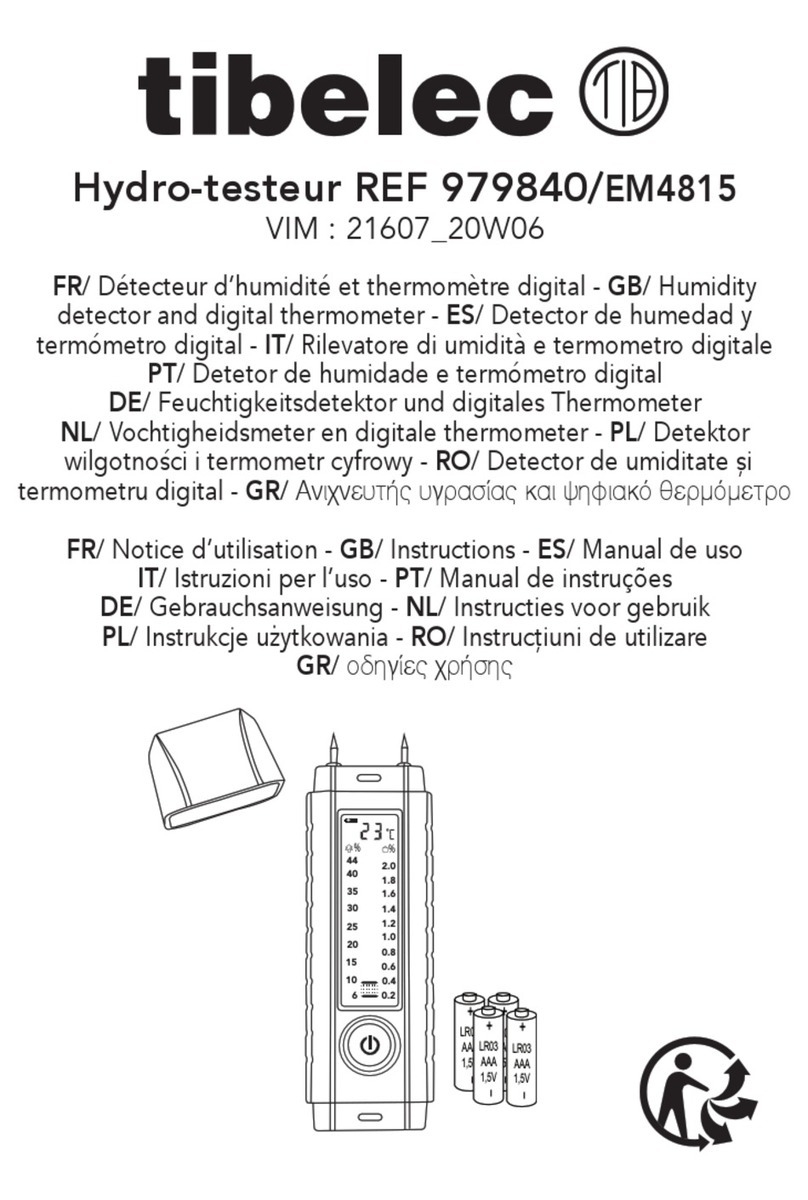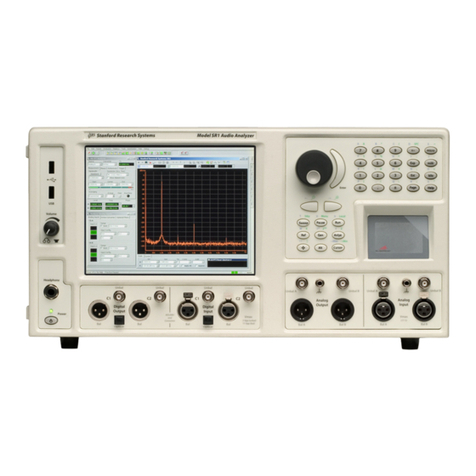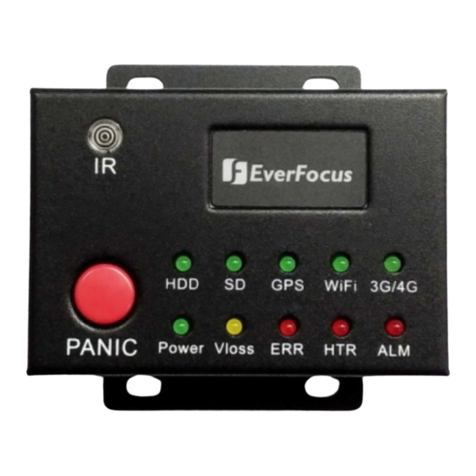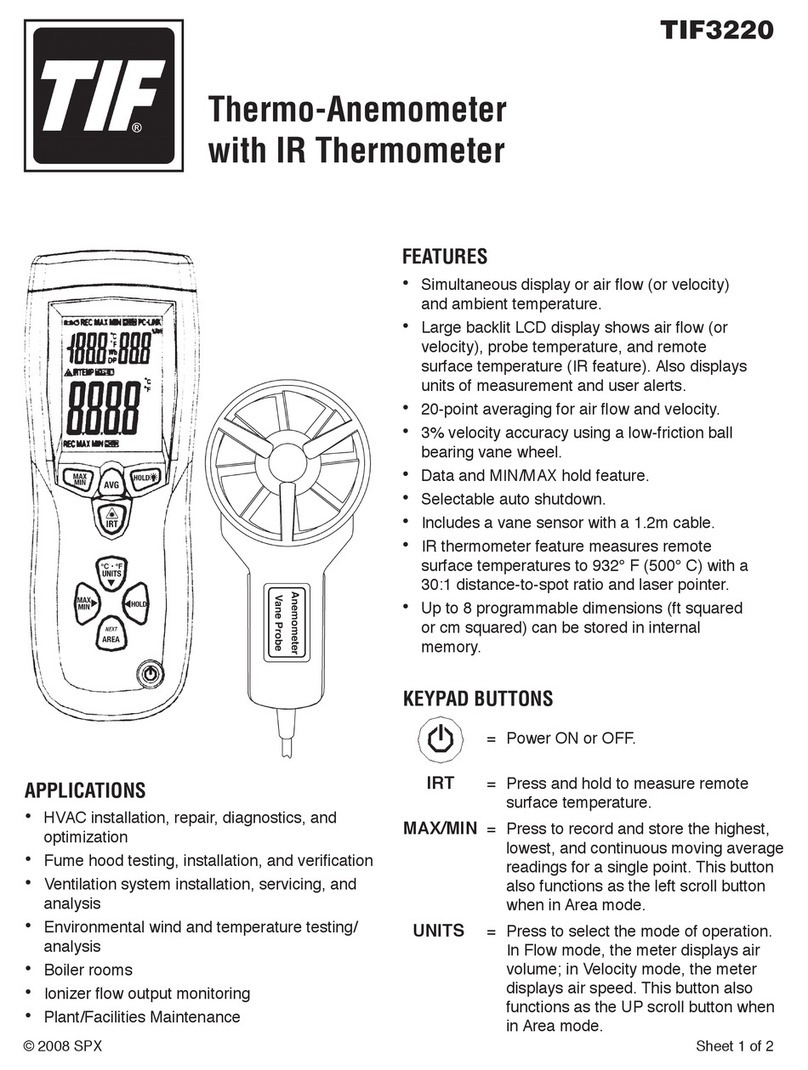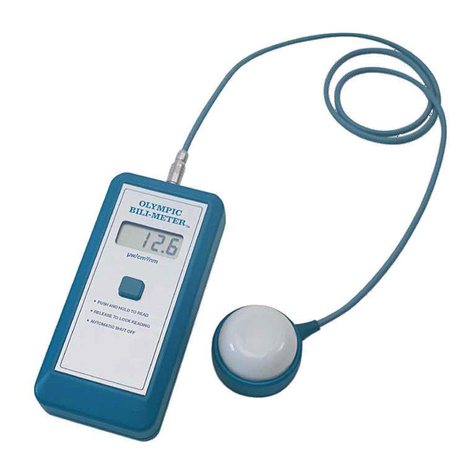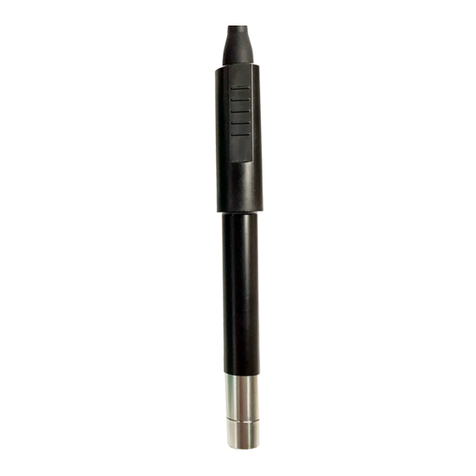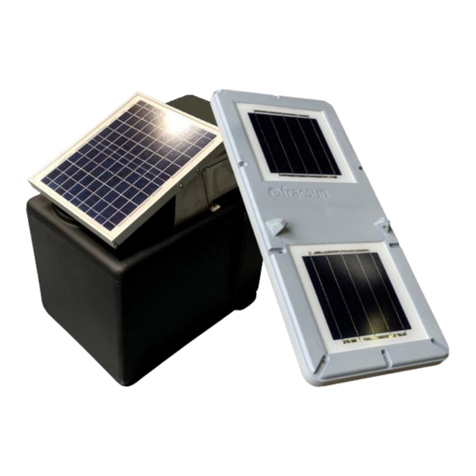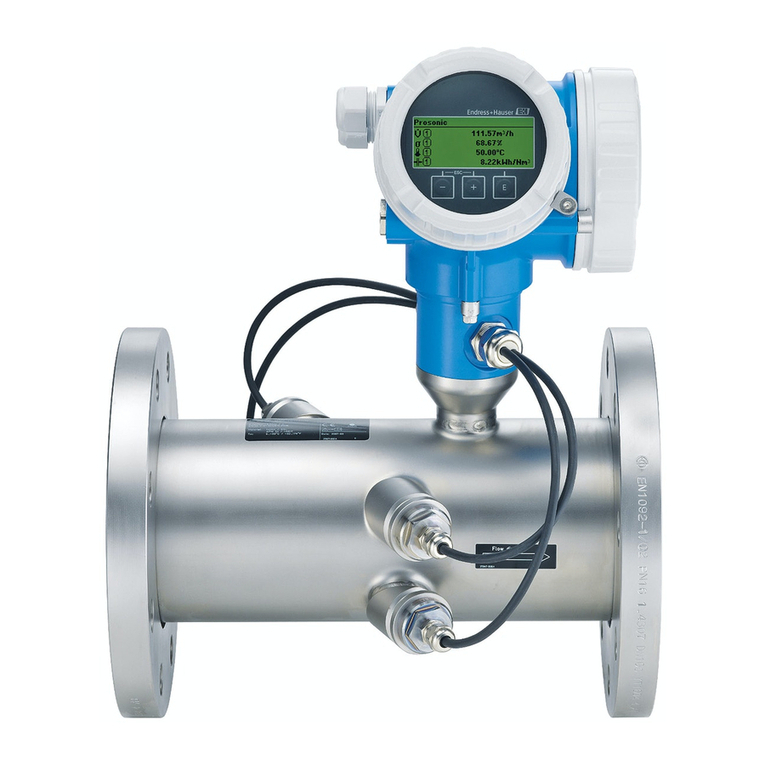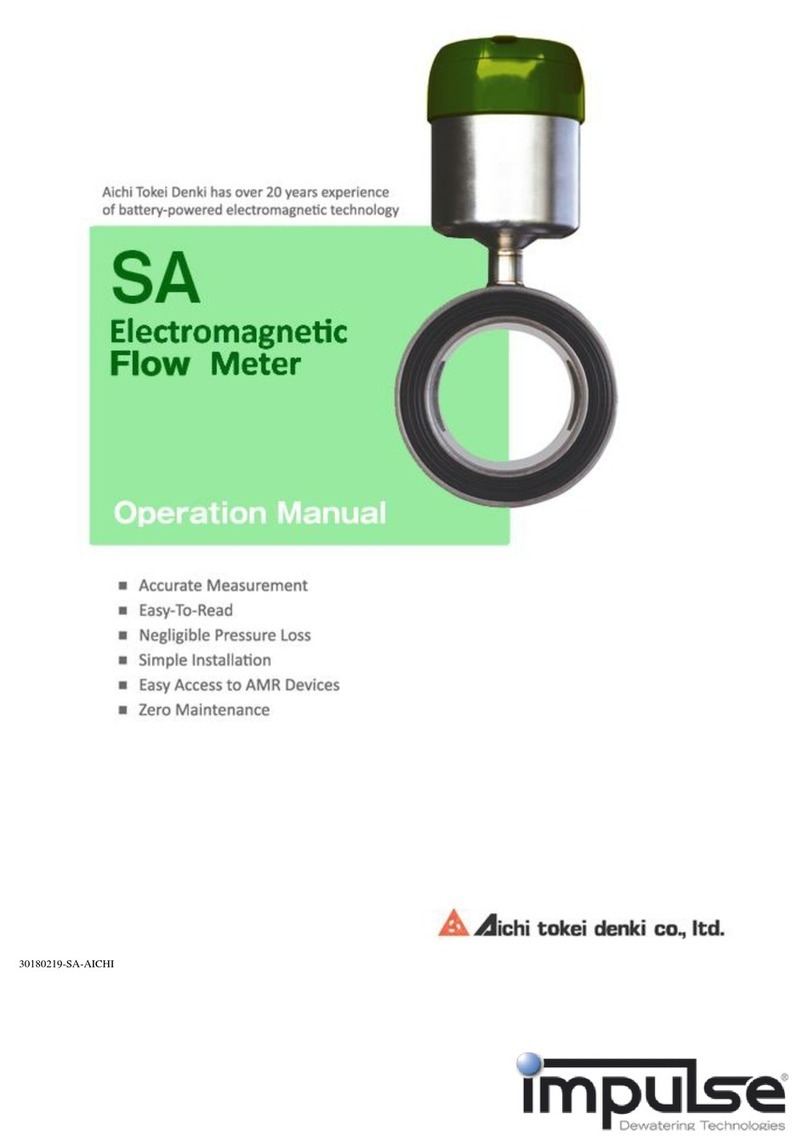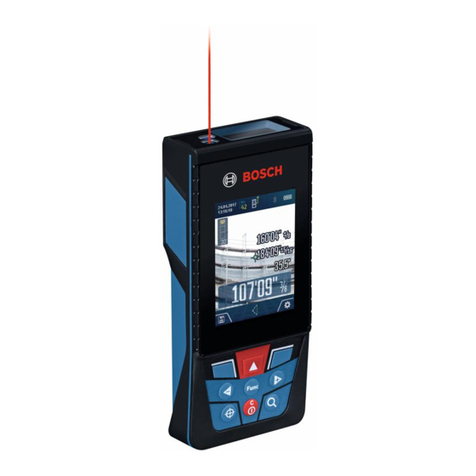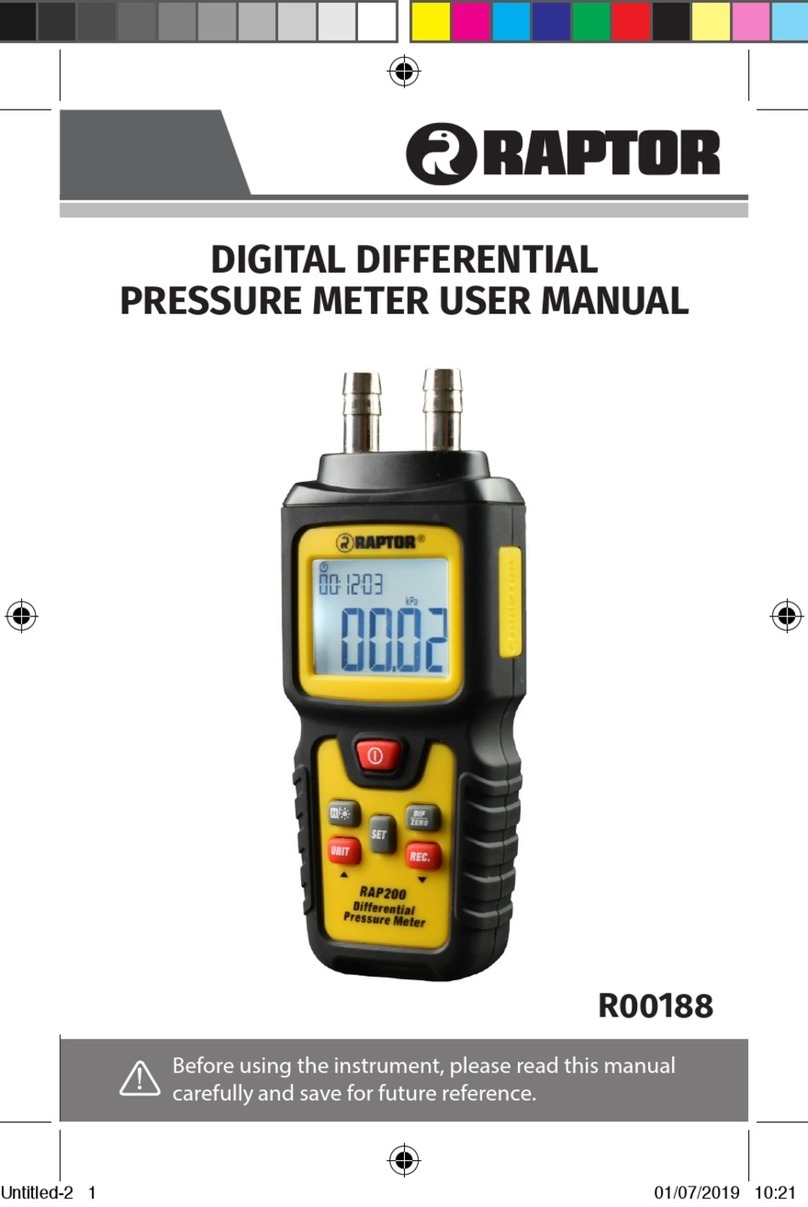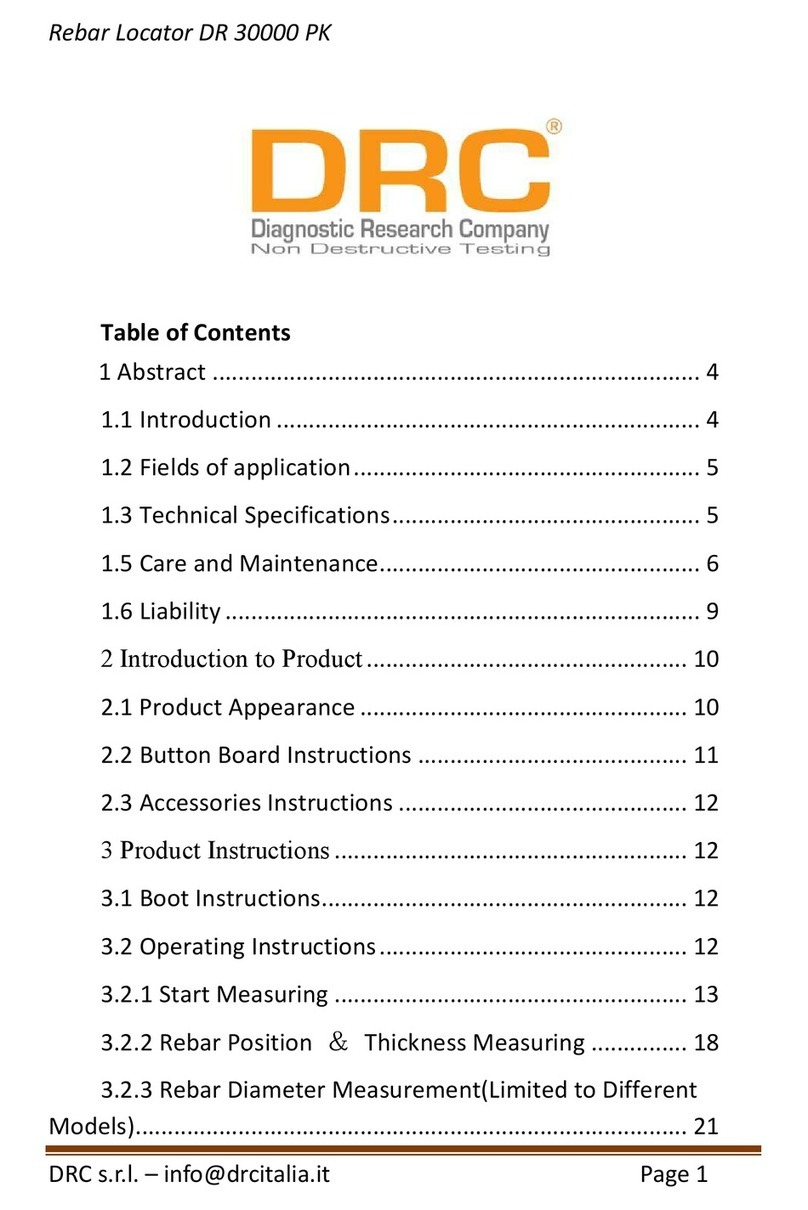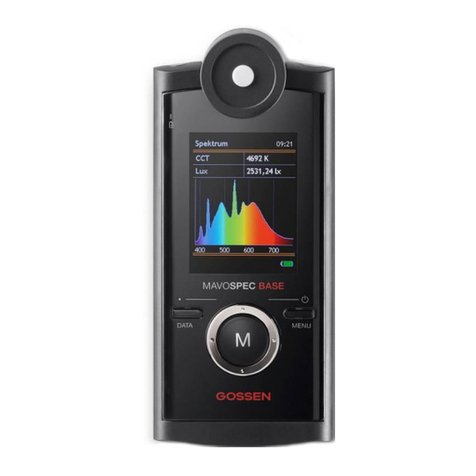tibelec 976530 User manual

Multi-testeur REF 976530/EM666B1
VIM : 21377_20W04
FR/ Notice d’utilisation - GB/ Instructions
ES/ Manual de uso - IT/ Istruzioni per l’uso
PT/ Manual de instruções - DE/ Gebrauchsanweisung
NL/ Instructies voor gebruik - PL/ instrukcje użytkowania
RO/ Instrucțiuni de utilizare - GR/ οδηγίες χρήσης
1kΩ
I
I
I
I
I
I
I
I
I
I
I
I
I
I
I
I
I
I
I
I
I
I
I
I
I
I
I
I
I
I
I
I
I
I
I
I
I
I
I
I
I
I
I
I
I
I
I
I
I
I
I
I
I
I
I
I
I
I
I
I
I
I
I
I
I
I
I
I
I
I
I
I
I
I
I
I
I
I
I
I
I
I
I
I
I
I
I
I
I
I
I
I
I
I
I
I
I
I
I
I
I
I
I
I
I
I
I
I
I
I
I
I
I
I
I
I
I
I
I
I
I
I
I
I
I
I
500
100
50
20
10
OHMS
OL
OL
BATT
dB
OL
V
5
2
1
0
V.mA
2kΩ/V
OL
OdB: 1mW 600Ω
0
0
0
50
10
2
100
20
4
150
30
6
200
40
8
250
50
10
300
60
12
~
~
I
I
I
I
I
I
I
I
I
I
I
I
I
I
I
I
I
I
I
I
I
I
I
I
I
I
I
I
I
I
I
I
I
I
I
I
I
I
I
I
I
I
I
I
I
I
I
I
I
I
I
I
I
I
I
I
I
I
I
I
I
I
I
I
I
I
I
BAD
GOOD
?
+4
20
30
35 36 37
0Ω ADJ.
I
I
I
I
I
I
I
I
I
I
I
I
I
I
I
I
PROTECTION
FUSE & DIODE
B
A
T.
mA
V~
V
9V
X10
X1k
1,5V
30
600
60
120
300
300
120
120
120
60
12
OFF
+
-
CAT III
!
300V max
600mA 300V max FUSED
~
Ω
LR03
AAA
1,5V
-
+
αντικατάσταση: της μπαταρίας/της ασφάλειας
1. Ξεβιδώστε τις 2 βίδες στο πίσω μέρος του μετρητή και
αφαιρέστε το καπάκι.
2. Αντικατάσταση της μπαταρίας: επαληθεύστε την κατάσταση
της μπαταρίας που είναι τοποθετημένη στον μετρητή. Για
να το κάνετε αυτό, γυρίστε τον διακόπτη επιλογής στη θέση
Ω (Χ10 ή Χ1k) και φέρτε τους 2 ακροδέκτες σε επαφή. Εάν
η βελόνα δεν κουνηθεί ή δεν φτάσει στη θέση 0 της κλίμακας
OHMS, αντικαταστήστε την μπαταρία.
3. Αντικατάσταση της ασφάλειας: επαληθεύστε την κατάσταση
της ασφάλειας που περιλαμβάνεται στον μετρητή (μπορεί
να έχει φθαρεί κατόπιν εσφαλμένου χειρισμού). Για να
το κάνετε αυτό, αφήστε την ασφάλεια στη θέση της και
γυρίστε τον διακόπτη λειτουργίας στη θέση Ω (X10 ή X1k)
Βάλτε έναν ακροδέκτη σε κάθε πλευρά της ασφάλειας.
Εάν η βελόνα δεν φτάσει στο 0 στην κλίμακα OHMS,
αντικαταστήστε την ασφάλεια.

FR
2
Avertissement :
1. Soyez particulièrement prudent en présence de tensions supérieures à
30VACrms ou 60VDC pour éviter des dommages ou électrocutions
2. Ne jamais appliquer une valeur d’entrée supérieure à la valeur maximum
de la gamme autorisée par le fabricant de l’appareil. Ce testeur est desti-
né à des applications de basse tension. (300V MAXI EN ALTERNATIF/
CONTINU )
3. Ne jamais utiliser le testeur pour mesurer la ligne alimentant un appareil
qui génère une montée subite de la tension puisqu’elle peut excéder la
tension maximale permise (exemple des moteurs)
4. Ne jamais utiliser le testeur si les pointes ou cordons de mesure sont
endommagés ou cassés. Veillez à ce qu’ils ne soient jamais humides ou
mouillés ; vériez le bon état de fonctionnement du testeur et celui des
cordons avant sa mise en service.
5. L’ouverture du boîtier donne accès à des parties conductrices de tensions
dangereuses. Toute action sur les circuits internes pourrait entraîner une
utilisation dangereuse. Ne jamais utiliser le testeur démonté. Avant
d’utiliser votre testeur : vériez que le boîtier est bien fermé et vissé.
6. Laissez toujours vos doigts derrière la garde des pointes test lors des
mesures. Veillez au cours de la mesure à ne pas entrer en contact (par
les doigts par exemple) directement ou indirectement avec les parties
conductrices de tensions élevées.
7. Avant toute intervention (changement de piles, par exemple) ou avant de
tourner le sélecteur rotatif pour changer de fonction, déconnectez les
pointes des cordons de toute source de tension et du circuit à mesurer
et éteindre le testeur.
8. Avant d’effectuer une mesure, assurez-vous que le sélecteur de fonction
est en position correcte.
IMPORTANT : ces instructions sont pour votre
sécurité. Lisez les attentivement avant utilisation
et conservez-les pour une utilisation ultérieure.

1. Afchage à aiguille
2. Vis de réglage à 0
3. Potentiomètre pour la
fonction Ohmmètre
4. Commutateur de fonction
5. Cordons de mesure
3
• Commutateur de fonctions : OFF, V DCV (voltmètre en continu), V~ ACV
(Voltmètre alternatif), mA DCA (ampèremètre en continu), BAT (testeur
de piles), Ω (Ohmmètre).
• Selecteur : tournez le sélecteur pour sélectionner la fonction et la gamme
appropriées.
• Aiguille : indiquera la valeur mesurée.
• Avant de commencer, vériez que l’aiguille est bien positionnée sur 0.
Si ce n’est pas le cas, ajustez sa position en tournant la vis de réglage.
Pendant la mesure :
- Si l’aiguille reste à gauche sur la position 0, cela signie que la position des
pointes tests est fausse, inversez la position et testez à nouveau.
- si l’aiguille reste à droite sur la position 300 (ou 60 ou 12), cela signie que
la valeur mesurée est supérieure à la valeur maximale de la plage sélectionnée.
Vous devez retirer les pointes test du circuit. Ensuite, sélectionnez un calibre
approprié et testez à nouveau. Veillez à toujours commencer par le calibre le
plus grand si vous avez des doutes sur la valeur à mesurer.
1kΩ
I
I
I
I
I
I
I
I
I
I
I
I
I
I
I
I
I
I
I
I
I
I
I
I
I
I
I
I
I
I
I
I
I
I
I
I
I
I
I
I
I
I
I
I
I
I
I
I
I
I
I
I
I
I
I
I
I
I
I
I
I
I
I
I
I
I
I
I
I
I
I
I
I
I
I
I
I
I
I
I
I
I
I
I
I
I
I
I
I
I
I
I
I
I
I
I
I
I
I
I
I
I
I
I
I
I
I
I
I
I
I
I
I
I
I
I
I
I
I
I
I
I
I
I
I
I
500
100
50
20
10
OHMS
OL
OL
BATT
dB
OL
V
5
2
1
0
V.mA
2kΩ/V
OL
OdB: 1mW 600Ω
0
0
0
50
10
2
100
20
4
150
30
6
200
40
8
250
50
10
300
60
12
~
~
I
I
I
I
I
I
I
I
I
I
I
I
I
I
I
I
I
I
I
I
I
I
I
I
I
I
I
I
I
I
I
I
I
I
I
I
I
I
I
I
I
I
I
I
I
I
I
I
I
I
I
I
I
I
I
I
I
I
I
I
I
I
I
I
I
I
I
BAD
GOOD
?
+ 4
20
30
35 36 37
I
I
I
I
I
I
I
I
I
I
I
I
I
I
I
I
1kΩ
I
I
I
I
I
I
I
I
I
I
I
I
I
I
I
I
I
I
I
I
I
I
I
I
I
I
I
I
I
I
I
I
I
I
I
I
I
I
I
I
I
I
I
I
I
I
I
I
I
I
I
I
I
I
I
I
I
I
I
I
I
I
I
I
I
I
I
I
I
I
I
I
I
I
I
I
I
I
I
I
I
I
I
I
I
I
I
I
I
I
I
I
I
I
I
I
I
I
I
I
I
I
I
I
I
I
I
I
I
I
I
I
I
I
I
I
I
I
I
I
I
I
I
I
I
I
500
100
50
20
10
OHMS
OL
OL
BATT
dB
OL
V
5
2
1
0
V.mA
2kΩ/V
OL
OdB: 1mW 600Ω
0
0
0
50
10
2
100
20
4
150
30
6
200
40
8
250
50
10
300
60
12
~
~
I
I
I
I
I
I
I
I
I
I
I
I
I
I
I
I
I
I
I
I
I
I
I
I
I
I
I
I
I
I
I
I
I
I
I
I
I
I
I
I
I
I
I
I
I
I
I
I
I
I
I
I
I
I
I
I
I
I
I
I
I
I
I
I
I
I
I
BAD
GOOD
?
+4
20
30
35 36 37
0Ω ADJ.
I
I
I
I
I
I
I
I
I
I
I
I
I
I
I
I
PROTECTION
FUSE & DIODE
B
A
T.
mA
V~
V
9V
X10
X1k
1,5V
30
600
60
120
300
300
120
120
120
60
12
OFF
+
-
CAT III
!
300V max
600mA 300V max FUSED
~
Ω
1
2
3
4
5

4
V
DCV
V~
ACV
mA
Utilisation :
Résistance (Ohmmètre)
1 méga Ohm
Ω
Tension alternative AC
de 0 à 300V
1kΩ
I
I
I
I
I
I
I
I
I
I
I
I
I
I
I
I
I
I
I
I
I
I
I
I
I
I
I
I
I
I
I
I
I
I
I
I
I
I
I
I
I
I
I
I
I
I
I
I
I
I
I
I
I
I
I
I
I
I
I
I
I
I
I
I
I
I
I
I
I
I
I
I
I
I
I
I
I
I
I
I
I
I
I
I
I
I
I
I
I
I
I
I
I
I
I
I
I
I
I
I
I
I
I
I
I
I
I
I
I
I
I
I
I
I
I
I
I
I
I
I
I
I
I
I
I
I
500
100
50
20
10
OHMS
OL
OL
BATT
dB
OL
V
5
2
1
0
V.mA
2kΩ/V
OL
OdB: 1mW 600Ω
0
0
0
50
10
2
100
20
4
150
30
6
200
40
8
250
50
10
300
60
12
~
~
I
I
I
I
I
I
I
I
I
I
I
I
I
I
I
I
I
I
I
I
I
I
I
I
I
I
I
I
I
I
I
I
I
I
I
I
I
I
I
I
I
I
I
I
I
I
I
I
I
I
I
I
I
I
I
I
I
I
I
I
I
I
I
I
I
I
I
BAD
GOOD
?
+4
20
30
35 36 37
0Ω ADJ.
I
I
I
I
I
I
I
I
I
I
I
I
I
I
I
I
PROTECTION
FUSE & DIODE
B
A
T.
mA
V~
V
9V
X10
X1k
1,5V
30
600
60
120
300
300
120
120
60
12
OFF
+
-
CAT III
!
300V max
600mA 300V max FUSED
~
Ω
V~
120
300
300
120
Tension continue DC
de 0 à 300V
+
-
1kΩ
I
I
I
I
I
I
I
I
I
I
I
I
I
I
I
I
I
I
I
I
I
I
I
I
I
I
I
I
I
I
I
I
I
I
I
I
I
I
I
I
I
I
I
I
I
I
I
I
I
I
I
I
I
I
I
I
I
I
I
I
I
I
I
I
I
I
I
I
I
I
I
I
I
I
I
I
I
I
I
I
I
I
I
I
I
I
I
I
I
I
I
I
I
I
I
I
I
I
I
I
I
I
I
I
I
I
I
I
I
I
I
I
I
I
I
I
I
I
I
I
I
I
I
I
I
I
500
100
50
20
10
OHMS
OL
OL
BATT
dB
OL
V
5
2
1
0
V.mA
2kΩ/V
OL
OdB: 1mW 600Ω
0
0
0
50
10
2
100
20
4
150
30
6
200
40
8
250
50
10
300
60
12
~
~
I
I
I
I
I
I
I
I
I
I
I
I
I
I
I
I
I
I
I
I
I
I
I
I
I
I
I
I
I
I
I
I
I
I
I
I
I
I
I
I
I
I
I
I
I
I
I
I
I
I
I
I
I
I
I
I
I
I
I
I
I
I
I
I
I
I
I
BAD
GOOD
?
+4
20
30
35 36
37
0Ω ADJ.
I
I
I
I
I
I
I
I
I
I
I
I
I
I
I
I
PROTECTION
FUSE & DIODE
B
A
T.
mA
V~
V
9V
X10
X1k
1,5V
30
600
60
120
300
300
120
120
60
12
OFF
+
-
CAT III
!
300V max
600mA 300V max FUSED
~
Ω
V
300
300
120
DCA
Intensité continue DC
de 0 à 600mA
+
-
batterie
1kΩ
I
I
I
I
I
I
I
I
I
I
I
I
I
I
I
I
I
I
I
I
I
I
I
I
I
I
I
I
I
I
I
I
I
I
I
I
I
I
I
I
I
I
I
I
I
I
I
I
I
I
I
I
I
I
I
I
I
I
I
I
I
I
I
I
I
I
I
I
I
I
I
I
I
I
I
I
I
I
I
I
I
I
I
I
I
I
I
I
I
I
I
I
I
I
I
I
I
I
I
I
I
I
I
I
I
I
I
I
I
I
I
I
I
I
I
I
I
I
I
I
I
I
I
I
I
I
500
100
50
20
10
OHMS
OL
OL
BATT
dB
OL
V
5
2
1
0
V.mA
2kΩ/V
OL
OdB: 1mW 600Ω
0
0
0
50
10
2
100
20
4
150
30
6
200
40
8
250
50
10
300
60
12
~
~
I
I
I
I
I
I
I
I
I
I
I
I
I
I
I
I
I
I
I
I
I
I
I
I
I
I
I
I
I
I
I
I
I
I
I
I
I
I
I
I
I
I
I
I
I
I
I
I
I
I
I
I
I
I
I
I
I
I
I
I
I
I
I
I
I
I
I
BAD
GOOD
?
+4
20
30
35 36 37
0Ω ADJ.
I
I
I
I
I
I
I
I
I
I
I
I
I
I
I
I
PROTECTION
FUSE & DIODE
B
A
T.
mA
V~
V
9V
X10
X1k
1,5V
30
600
60
120
300
300
120
120
60
12
OFF
+
-
CAT III
!
300V max
600mA 300V max FUSED
~
Ω
mA
30
600
60
BAT
Test de batterie
de 1,5 et 9V
+
-
1kΩ
I
I
I
I
I
I
I
I
I
I
I
I
I
I
I
I
I
I
I
I
I
I
I
I
I
I
I
I
I
I
I
I
I
I
I
I
I
I
I
I
I
I
I
I
I
I
I
I
I
I
I
I
I
I
I
I
I
I
I
I
I
I
I
I
I
I
I
I
I
I
I
I
I
I
I
I
I
I
I
I
I
I
I
I
I
I
I
I
I
I
I
I
I
I
I
I
I
I
I
I
I
I
I
I
I
I
I
I
I
I
I
I
I
I
I
I
I
I
I
I
I
I
I
I
I
I
500
100
50
20
10
OHMS
OL
OL
BATT
dB
OL
V
5
2
1
0
V.mA
2kΩ/V
OL
OdB: 1mW 600Ω
0
0
0
50
10
2
100
20
4
150
30
6
200
40
8
250
50
10
300
60
12
~
~
I
I
I
I
I
I
I
I
I
I
I
I
I
I
I
I
I
I
I
I
I
I
I
I
I
I
I
I
I
I
I
I
I
I
I
I
I
I
I
I
I
I
I
I
I
I
I
I
I
I
I
I
I
I
I
I
I
I
I
I
I
I
I
I
I
I
I
BAD
GOOD
?
+4
20
30
35 36 37
0Ω ADJ.
I
I
I
I
I
I
I
I
I
I
I
I
I
I
I
I
PROTECTION
FUSE & DIODE
B
A
T.
mA
V~
V
9V
X10
X1k
1,5V
30
600
60
120
300
300
120
120
60
12
OFF
+
-
CAT III
!
300V max
600mA 300V max FUSED
~
Ω
B
A
T.
9V
X1k
1,5V
Ω
Note : s’il est impossible
d’ajuster l’aiguille sur
le zéro à l’aide du po-
tentiomètre, remplacez
la pile.
1kΩ
I
I
I
I
I
I
I
I
I
I
I
I
I
I
I
I
I
I
I
I
I
I
I
I
I
I
I
I
I
I
I
I
I
I
I
I
I
I
I
I
I
I
I
I
I
I
I
I
I
I
I
I
I
I
I
I
I
I
I
I
I
I
I
I
I
I
I
I
I
I
I
I
I
I
I
I
I
I
I
I
I
I
I
I
I
I
I
I
I
I
I
I
I
I
I
I
I
I
I
I
I
I
I
I
I
I
I
I
I
I
I
I
I
I
I
I
I
I
I
I
I
I
I
I
I
I
500
100
50
20
10
OHMS
OL
OL
BATT
dB
OL
V
5
2
1
0
V.mA
2kΩ/V
OL
OdB: 1mW 600Ω
0
0
0
50
10
2
100
20
4
150
30
6
200
40
8
250
50
10
300
60
12
~
~
I
I
I
I
I
I
I
I
I
I
I
I
I
I
I
I
I
I
I
I
I
I
I
I
I
I
I
I
I
I
I
I
I
I
I
I
I
I
I
I
I
I
I
I
I
I
I
I
I
I
I
I
I
I
I
I
I
I
I
I
I
I
I
I
I
I
I
BAD
GOOD
?
+4
20
30
35 36 37
0Ω ADJ.
I
I
I
I
I
I
I
I
I
I
I
I
I
I
I
I
PROTECTION
FUSE & DIODE
B
A
T.
mA
V~
V
9V
X10
X1k
1,5V
30
600
60
120
300
300
120
120
60
12
OFF
+
-
CAT III
!
300V max
600mA 300V max FUSED
~
Ω
B
9V
X10
X1k
Ω

1. Mettez le commutateur de fonction sur la position Ω et sur l’un des 2 calibres.
2. Avant de commencer la mesure, positionnez l’aiguille sur 0 à l’extrémité droite
de l’échelle supérieure avec le potentiomètre et en mettant les 2 pointes en contact.
3. Connectez les pointes test sur la résistance.
4.
Pour obtenir une valeur de résistance correcte
et si vous avez positionné le commutateur
sur x10, vous devez multiplier la valeur
indiquée par l’aiguille par 10 quand elle est
stabilisée.
1. Mettez le commutateur de fonction sur la position V et sur le calibre de
tension continue approprié, si elle est inconnue, commencez par le
calibre le plus élevé et descendez.
2. Connectez les pointes test sur le circuit.
Pointe rouge sur le +, pointe noire sur le -.
3. Lisez la valeur indiquée par l’aiguille
quand elle est stabilisée.
5
1. Mettez le commutateur de fonction sur la position V~ et sur le calibre de tension
alternative approprié, si elle est inconnue, commencez par le calibre le plus
élevé et descendez.
2. Connectez les pointes test sur le circuit.
3. Lisez la valeur indiquée par l’aiguille
quand elle est stabilisée.
Réglage Lire l’échelle Multiplier Diviser
calibre suivante par par
30 0-300 - 10
600 0-60 10 -
1. Mettez le commutateur de fonction sur la position mA et sur le calibre
d’intensité continue approprié, si elle est inconnue, commencez par le calibre
le plus élevé et descendez.
2. Connectez les pointes test sur le circuit. Pointe rouge sur le +, pointe noire sur le -.
3. Lisez la valeur indiquée par l’aiguille quand elle est stabilisée.
1. Mettez le commutateur de fonction sur la position BAT et sur le calibre 1,5V ou
9V selon la batterie à tester.
2. Connectez les pointes test aux bornes de la pile. Pointe rouge sur le +,
pointe noire sur le -.
3. Lisez l’indication BAD (mauvais, zone rouge) ou GOOD (bon, zone verte)
indiquée par l’aiguille quand elle est stabilisée. Les batteries indiquées en
BAD (rouge) sont déchargées et doivent être remplacées.
Réglage Lire l’échelle Multiplier
calibre suivante par
x10 10
x1k 0-1kΩ 1000
Réglage Lire l’échelle Multiplier
calibre suivante par
12 0-12 1
60 0-60 1
120 0-12 10
300 0-300 1
Réglage Lire l’échelle Multiplier
calibre suivante par
60 0-60 1
120 0-12 10
300 0-300 1
Προειδοποίηση :
1. Απαιτείται ιδιαίτερη προσοχή με τάσεις άνω των 30V AC (ενεργός τιμή)
ή 60V DC προς αποφυγή βλάβης ή ηλεκτροπληξίας.
2. Μην εφαρμόζετε ποτέ τιμή εισόδου ανώτερη πό τη μέγιστη τιμή του
εύρους που έχει εγκριθεί από τον κατασκευαστή της συσκευής.
Ο ελεγκτής προορίζεται για εφαρμογές χαμηλής τάσης. (300 V ΜΕΓ.
Ε Ν Α ΛΛΑ Σ Σ ΟΜΕ Ν Ο /ΣΥ Ν Ε ΧΕΣ )
3. Μην χρησιμοποιείτε ποτέ τον μετρητή για να μετρήσετε τη γραμμή που
τροφοδοτεί μια συσκευή η οποία παράγει αιφνίδια άνοδο της τάσης καθώς
μπορεί να υπερβεί τη μέγιστη επιτρεπόμενη τάση (π.χ. κινητήρες).
4. Μην χρησιμοποιείτε ποτέ τον μετρητή εάν οι ακροδέκτες ή τα καλώδια
μέτρησης είναι φθαρμένα ή σπασμένα. Βεβαιωθείτε πως δεν είναι σε
καμία περίπτωση υγρά ή νωπά· επαληθεύστε ότι ο μετρητής και τα
καλώδια βρίσκονται σε καλή κατάσταση πριν τον θέσετε σε λειτουργία.
5. Ανοίγοντας το περίβλημα παρέχεται πρόσβαση σε αγώγιμα τμήματα
επικίνδυνων τάσεων. Οποιαδήποτε ενέργεια στα εσωτερικά κυκλώματα
θα μπορούσε να καταστήσει τη χρήση του προϊόντος επικίνδυνη. Μην
χρησιμοποιείτε ποτέ τον μετρητή αποσυναρμολογημένο. Πριν από τη
χρήση: βεβαιωθείτε ότι το περίβλημα είναι καλά κλεισμένο και ιδωμένο.
6. Κρατάτε πάντοτε τα δάκτυλά σας πίσω από το προστατευτικό των
ακροδεκτών δοκιμής κατά τη μέτρηση. Βεβαιωθείτε κατά τη διάρκεια της
μέτρησης ότι δεν έρχεστε σε επαφή (π.χ. με τα δάκτυλα), άμεσα ή έμμεσα,
με τα αγώγιμα τμήματα υψηλών τάσεων.
7. Βεβαιωθείτε ότι έχετε αποσυνδέσει τους ακροδέκτες των καλωδίων από
κάθε πηγή τάσης και κύκλωμα που μετρούσατε και απομακρύνετε τους
ακροδέκτες όταν αλλάζετε λειτουργία. Απενεργοποιήστε τον μετρητή πριν
από κάθε παρέμβαση (π.χ. αλλαγή μπαταριών) ή προτού γυρίσετε τον
περιστροφικό διακόπτη για να αλλάξετε λειτουργία.
8. Πριν από την πραγματοποίηση μιας μέτρησης, βεβαιωθείτε πως ο διακόπτης
επιλογής λειτουργίας βρίσκεται στη σωστή θέση.

6
Classe II : matériel
double isolation,
dispensé de raccord
à la terre
Ne pas jeter aux
ordures ménagères,
utilisez un point de
collecte
Remplacement de la pile et du fusible
Protégé par fusible
standard
Certié conforme
aux normes
européennes
Risques résultants
de tensions
dangereuses
Le consommateur est tenu de par la loi de recycler toutes les piles et tous les
accumulateurs usagés. Il est interdit de les jeter dans la poubelle ordinaire !
Reportez-vous aux précisions relatives à la protection de l’environnement.
1. Dévissez les 2 vis à l’arrière du testeur et déclipsez
la façade avant.
2. Remplacement de la pile : vériez l’état d’usure de la pile
incluse dans le testeur. Pour cela, mettez le commutateur sur
la position Ω (X10 ou X1k) et mettez les 2 pointes en contact,
si l’aiguille ne bouge pas ou ne parvient pas jusqu’au 0 de
l’échelle OHMS, remplacez la
pile.
3. Remplacement du fusible : vériez l’état du fusible inclus
dans le testeur (il peut être endommagé suite à une
mauvaise manipulation). Pour cela, laissez le fusible dans
son emplacement et mettez le commutateur sur la position
Ω (X10 ou X1k). Mettez une pointe de chaque côté du
fusible, si l’aiguille ne parvient pas jusqu’au 0 de l’échelle
OHMS, remplacez le fusible.
Modèle n°EM666B1
- 1 pile LR03/AAA 1,5V fournie
- Fusible de protection 630mA/300V 5x20mm
- Dimensions et Poids : 28x85x119mm / 165gr (avec la pile)
- Niveau de sécurité : 300V CAT III
- Conforme à la norme EN 61010-1
TIBELEC GARANTIT LA QUALITE ET LA FIABILITE DE CE PRODUIT ; IL FAIT PARTIE
DES ARTICLES SOUS GARANTIE LEGALE D’UNE DUREE DE 2 ANS POUR DEFAUTS ET
VICES CACHES CONFORMEMENT AUX ARTICLES 1641 A 1648 DU CODE CIVIL.
Tibelec ne pourra pas être tenu responsable des dommages causés suite à une mauvaise
utilisation, mauvais entretien, un détournement de l’utilisation de ce produit, l’usure
normale, bris par chute, ouverture de l’appareil. Tibelec ne pourra pas accepter en retour
les produits pour remplacement des consommables (lampes, transfo., verre) nécessaires
à l’utilisation de ce produit. Le remplacement des consommables est à votre charge.
+ -
Importé par tibelec 996 rue des hauts de Sainghin CRT4
59262 Sainghin en Mélantois - France

7

8
Warning :
1. Be particularly careful when using voltages above 30V AC (RMS) or 60V DC
to avoid damage or electric shock.
2. Never apply an input voltage higher than the maximum value of the
range allowed by the device manufacturer. This monitor is design for low
v o l t a g e a p p l i c a t i o n s . ( 3 0 0 V M A X I N A C / D C )
3. Never use the tester to measure the line feeding a device that generates a
sudden surge in voltage as it may exceed the maximum permitted voltage
(e. g. motors).
4. Never use the tester if the test plungers or leads are damaged or broken.
Make sure they are never wet or damp; check that the tester and the leads
are working properly before commissioning.
5. Opening the housing gives access to hazardous voltage conductive parts.
Any action on internal circuits could result in hazardous use. Never use the
disassembled tester. Before using it: check that the housing is properly
closed and screwed in.
6. Always make sure your ngers are behind the test plunger guard during
measurements. During the measurement, be careful not to come into direct
or indirect contact (e. g. with ngers) with high voltage conductive parts.
7. Be sure to disconnect the plungers of the leads from any voltage source
and the circuit to be measured; remove the plungers when changing func
tion. Before performing any work (e. g. changing batteries) or before
turning the rotary switch to change functions, disconnect the tester.
8. Before taking a measurement, make sure the function selector switch is in
the correct position.
IMPORTANT: these instructions are for your safety.
Read them carefully before use and keep them for
future use.
GB

9
1. Needle display
2. Adjustment screw to 0
3. Potentiometer for the
ohmmeter function
4. Function switch
5. Test leads
• Function switch : OFF, V DCV (DC Voltmeter), V~ ACV (AC Voltmeter),
mA DCA (DC Ammeter), BAT (battery test), Ω (Ohmmeter).
• Selector switch : turn the switch to select the appropriate function and range.
• Needle : will indicate the measured value.
• Before starting, check that the needle is set to 0. If it isn’t, adjust its position
by turning the adjusting screw.
During the measurement:
- If the needle stays to the left on position 0, this means that the position of the
test plungers is incorrect; reverse the position and test again.
- if the needle stays to the right on position 300 (or 60 or 12), this means that
the measured value is higher than the maximum value of the selected range.
You must remove the test plungers from the circuit. Then select a suitable
rating and test again.
Always start with the highest rating if you are in doubt about the value to be
measured.
1kΩ
I
I
I
I
I
I
I
I
I
I
I
I
I
I
I
I
I
I
I
I
I
I
I
I
I
I
I
I
I
I
I
I
I
I
I
I
I
I
I
I
I
I
I
I
I
I
I
I
I
I
I
I
I
I
I
I
I
I
I
I
I
I
I
I
I
I
I
I
I
I
I
I
I
I
I
I
I
I
I
I
I
I
I
I
I
I
I
I
I
I
I
I
I
I
I
I
I
I
I
I
I
I
I
I
I
I
I
I
I
I
I
I
I
I
I
I
I
I
I
I
I
I
I
I
I
I
500
100
50
20
10
OHMS
OL
OL
BATT
dB
OL
V
5
2
1
0
V.mA
2kΩ/V
OL
OdB: 1mW 600Ω
0
0
0
50
10
2
100
20
4
150
30
6
200
40
8
250
50
10
300
60
12
~
~
I
I
I
I
I
I
I
I
I
I
I
I
I
I
I
I
I
I
I
I
I
I
I
I
I
I
I
I
I
I
I
I
I
I
I
I
I
I
I
I
I
I
I
I
I
I
I
I
I
I
I
I
I
I
I
I
I
I
I
I
I
I
I
I
I
I
I
BAD
GOOD
?
+ 4
20
30
35 36 37
I
I
I
I
I
I
I
I
I
I
I
I
I
I
I
I
1kΩ
I
I
I
I
I
I
I
I
I
I
I
I
I
I
I
I
I
I
I
I
I
I
I
I
I
I
I
I
I
I
I
I
I
I
I
I
I
I
I
I
I
I
I
I
I
I
I
I
I
I
I
I
I
I
I
I
I
I
I
I
I
I
I
I
I
I
I
I
I
I
I
I
I
I
I
I
I
I
I
I
I
I
I
I
I
I
I
I
I
I
I
I
I
I
I
I
I
I
I
I
I
I
I
I
I
I
I
I
I
I
I
I
I
I
I
I
I
I
I
I
I
I
I
I
I
I
500
100
50
20
10
OHMS
OL
OL
BATT
dB
OL
V
5
2
1
0
V.mA
2kΩ/V
OL
OdB: 1mW 600Ω
0
0
0
50
10
2
100
20
4
150
30
6
200
40
8
250
50
10
300
60
12
~
~
I
I
I
I
I
I
I
I
I
I
I
I
I
I
I
I
I
I
I
I
I
I
I
I
I
I
I
I
I
I
I
I
I
I
I
I
I
I
I
I
I
I
I
I
I
I
I
I
I
I
I
I
I
I
I
I
I
I
I
I
I
I
I
I
I
I
I
BAD
GOOD
?
+4
20
30
35 36 37
0Ω ADJ.
I
I
I
I
I
I
I
I
I
I
I
I
I
I
I
I
PROTECTION
FUSE & DIODE
B
A
T.
mA
V~
V
9V
X10
X1k
1,5V
30
600
60
120
300
300
120
120
120
60
12
OFF
+
-
CAT III
!
300V max
600mA 300V max FUSED
~
Ω
1
2
3
4
5

10
Resistance (Ohmmeter)
1 MΩ
AC voltage
0 to 300V
DC voltage
0 à 300V
Direct current DC
0 to 600mA
Battery test
1,5 to 9V
Note : if it is not possible
to adjust the needle to
zero using the potentio-
meter, replace the battery
V
DCV
V~
ACV
mA
Using :
Ω
1kΩ
I
I
I
I
I
I
I
I
I
I
I
I
I
I
I
I
I
I
I
I
I
I
I
I
I
I
I
I
I
I
I
I
I
I
I
I
I
I
I
I
I
I
I
I
I
I
I
I
I
I
I
I
I
I
I
I
I
I
I
I
I
I
I
I
I
I
I
I
I
I
I
I
I
I
I
I
I
I
I
I
I
I
I
I
I
I
I
I
I
I
I
I
I
I
I
I
I
I
I
I
I
I
I
I
I
I
I
I
I
I
I
I
I
I
I
I
I
I
I
I
I
I
I
I
I
I
500
100
50
20
10
OHMS
OL
OL
BATT
dB
OL
V
5
2
1
0
V.mA
2kΩ/V
OL
OdB: 1mW 600Ω
0
0
0
50
10
2
100
20
4
150
30
6
200
40
8
250
50
10
300
60
12
~
~
I
I
I
I
I
I
I
I
I
I
I
I
I
I
I
I
I
I
I
I
I
I
I
I
I
I
I
I
I
I
I
I
I
I
I
I
I
I
I
I
I
I
I
I
I
I
I
I
I
I
I
I
I
I
I
I
I
I
I
I
I
I
I
I
I
I
I
BAD
GOOD
?
+4
20
30
35 36 37
0Ω ADJ.
I
I
I
I
I
I
I
I
I
I
I
I
I
I
I
I
PROTECTION
FUSE & DIODE
B
A
T.
mA
V~
V
9V
X10
X1k
1,5V
30
600
60
120
300
300
120
120
60
12
OFF
+
-
CAT III
!
300V max
600mA 300V max FUSED
~
Ω
V~
120
300
300
120
+
-
1kΩ
I
I
I
I
I
I
I
I
I
I
I
I
I
I
I
I
I
I
I
I
I
I
I
I
I
I
I
I
I
I
I
I
I
I
I
I
I
I
I
I
I
I
I
I
I
I
I
I
I
I
I
I
I
I
I
I
I
I
I
I
I
I
I
I
I
I
I
I
I
I
I
I
I
I
I
I
I
I
I
I
I
I
I
I
I
I
I
I
I
I
I
I
I
I
I
I
I
I
I
I
I
I
I
I
I
I
I
I
I
I
I
I
I
I
I
I
I
I
I
I
I
I
I
I
I
I
500
100
50
20
10
OHMS
OL
OL
BATT
dB
OL
V
5
2
1
0
V.mA
2kΩ/V
OL
OdB: 1mW 600Ω
0
0
0
50
10
2
100
20
4
150
30
6
200
40
8
250
50
10
300
60
12
~
~
I
I
I
I
I
I
I
I
I
I
I
I
I
I
I
I
I
I
I
I
I
I
I
I
I
I
I
I
I
I
I
I
I
I
I
I
I
I
I
I
I
I
I
I
I
I
I
I
I
I
I
I
I
I
I
I
I
I
I
I
I
I
I
I
I
I
I
BAD
GOOD
?
+4
20
30
35 36
37
0Ω ADJ.
I
I
I
I
I
I
I
I
I
I
I
I
I
I
I
I
PROTECTION
FUSE & DIODE
B
A
T.
mA
V~
V
9V
X10
X1k
1,5V
30
600
60
120
300
300
120
120
60
12
OFF
+
-
CAT III
!
300V max
600mA 300V max FUSED
~
Ω
V
300
300
120
DCA
+
-
batterie
1kΩ
I
I
I
I
I
I
I
I
I
I
I
I
I
I
I
I
I
I
I
I
I
I
I
I
I
I
I
I
I
I
I
I
I
I
I
I
I
I
I
I
I
I
I
I
I
I
I
I
I
I
I
I
I
I
I
I
I
I
I
I
I
I
I
I
I
I
I
I
I
I
I
I
I
I
I
I
I
I
I
I
I
I
I
I
I
I
I
I
I
I
I
I
I
I
I
I
I
I
I
I
I
I
I
I
I
I
I
I
I
I
I
I
I
I
I
I
I
I
I
I
I
I
I
I
I
I
500
100
50
20
10
OHMS
OL
OL
BATT
dB
OL
V
5
2
1
0
V.mA
2kΩ/V
OL
OdB: 1mW 600Ω
0
0
0
50
10
2
100
20
4
150
30
6
200
40
8
250
50
10
300
60
12
~
~
I
I
I
I
I
I
I
I
I
I
I
I
I
I
I
I
I
I
I
I
I
I
I
I
I
I
I
I
I
I
I
I
I
I
I
I
I
I
I
I
I
I
I
I
I
I
I
I
I
I
I
I
I
I
I
I
I
I
I
I
I
I
I
I
I
I
I
BAD
GOOD
?
+4
20
30
35 36 37
0Ω ADJ.
I
I
I
I
I
I
I
I
I
I
I
I
I
I
I
I
PROTECTION
FUSE & DIODE
B
A
T.
mA
V~
V
9V
X10
X1k
1,5V
30
600
60
120
300
300
120
120
60
12
OFF
+
-
CAT III
!
300V max
600mA 300V max FUSED
~
Ω
mA
30
600
60
BAT
+
-
1kΩ
I
I
I
I
I
I
I
I
I
I
I
I
I
I
I
I
I
I
I
I
I
I
I
I
I
I
I
I
I
I
I
I
I
I
I
I
I
I
I
I
I
I
I
I
I
I
I
I
I
I
I
I
I
I
I
I
I
I
I
I
I
I
I
I
I
I
I
I
I
I
I
I
I
I
I
I
I
I
I
I
I
I
I
I
I
I
I
I
I
I
I
I
I
I
I
I
I
I
I
I
I
I
I
I
I
I
I
I
I
I
I
I
I
I
I
I
I
I
I
I
I
I
I
I
I
I
500
100
50
20
10
OHMS
OL
OL
BATT
dB
OL
V
5
2
1
0
V.mA
2kΩ/V
OL
OdB: 1mW 600Ω
0
0
0
50
10
2
100
20
4
150
30
6
200
40
8
250
50
10
300
60
12
~
~
I
I
I
I
I
I
I
I
I
I
I
I
I
I
I
I
I
I
I
I
I
I
I
I
I
I
I
I
I
I
I
I
I
I
I
I
I
I
I
I
I
I
I
I
I
I
I
I
I
I
I
I
I
I
I
I
I
I
I
I
I
I
I
I
I
I
I
BAD
GOOD
?
+4
20
30
35 36 37
0Ω ADJ.
I
I
I
I
I
I
I
I
I
I
I
I
I
I
I
I
PROTECTION
FUSE & DIODE
B
A
T.
mA
V~
V
9V
X10
X1k
1,5V
30
600
60
120
300
300
120
120
60
12
OFF
+
-
CAT III
!
300V max
600mA 300V max FUSED
~
Ω
B
A
T.
9V
X1k
1,5V
Ω
1kΩ
I
I
I
I
I
I
I
I
I
I
I
I
I
I
I
I
I
I
I
I
I
I
I
I
I
I
I
I
I
I
I
I
I
I
I
I
I
I
I
I
I
I
I
I
I
I
I
I
I
I
I
I
I
I
I
I
I
I
I
I
I
I
I
I
I
I
I
I
I
I
I
I
I
I
I
I
I
I
I
I
I
I
I
I
I
I
I
I
I
I
I
I
I
I
I
I
I
I
I
I
I
I
I
I
I
I
I
I
I
I
I
I
I
I
I
I
I
I
I
I
I
I
I
I
I
I
500
100
50
20
10
OHMS
OL
OL
BATT
dB
OL
V
5
2
1
0
V.mA
2kΩ/V
OL
OdB: 1mW 600Ω
0
0
0
50
10
2
100
20
4
150
30
6
200
40
8
250
50
10
300
60
12
~
~
I
I
I
I
I
I
I
I
I
I
I
I
I
I
I
I
I
I
I
I
I
I
I
I
I
I
I
I
I
I
I
I
I
I
I
I
I
I
I
I
I
I
I
I
I
I
I
I
I
I
I
I
I
I
I
I
I
I
I
I
I
I
I
I
I
I
I
BAD
GOOD
?
+4
20
30
35 36 37
0Ω ADJ.
I
I
I
I
I
I
I
I
I
I
I
I
I
I
I
I
PROTECTION
FUSE & DIODE
B
A
T.
mA
V~
V
9V
X10
X1k
1,5V
30
600
60
120
300
300
120
120
60
12
OFF
+
-
CAT III
!
300V max
600mA 300V max FUSED
~
Ω
B
9V
X10
X1k
Ω

1. Set the function switch to position V~ and the appropriate AC voltage
rating; if unknown, start with the highest rating and work your way down.
2. Connect the test plungers to the circuit.
3. Read the value indicated by the needle
once it has stabilised.
11
1. Set the function switch to position V and the appropriate DC voltage
rating; if unknown, start with the highest rating and work your way down.
2. Connect the test plungers to the circuit.
Red plunger on +, black plunger on -.
3. Read the value indicated by the needle
once it has stabilised.
1. Set the function switch to position mA and the appropriate DC voltage
rating; if unknown, start with the highest rating and work your way down.
2. Connect the test plungers to the circuit. Red plunger on +, black plunger on -.
3. Read the value indicated by the needle once it has stabilised.
1.
Set the function switch to position BAT and 1.5V or 9V rating depending on
the battery to be tested
.
2. Connect the test plungers to the battery terminals. Red plunger on +, black
plunger on -.
3. Read the BAD (bad, red zone) or GOOD (good, green zone) indication shown
by the needle once it has stabilised. The batteries indicated as BAD (red) are
discharged and must be replaced.
1. Set the function switch to
Ω
and one of the 2 ratings.
2. Before starting the measurement, position the needle on 0 at the right end
of the upper scale with the potentiometer and bring the 2 plungers into
contact.
3.
Connect the test plungers to the resistance.
4. To obtain a correct resistance value, and
if you have set the switch to x10, multiply
the value indicated by the needle
by 10 once it has stabilised.
Rating Read the Multiply Divide
adjustment
following scale
by by
30 0-300 - 10
600 0-60 10 -
Rating Read the Multiply
adjustment following scale by
x10 10
x1k 0-1kΩ 1000
Rating Read the Multiply
adjustment following scale by
12 0-12 1
60 0-60 1
120 0-12 10
300 0-300 1
Rating Read the Multiply
adjustment following scale by
60 0-60 1
120 0-12 10
300 0-300 1

12
1. Loosen the 2 screws on the back of the tester and unclip
the front panel.
2. Replacing the battery: check the wear and tear of the
battery included in the tester. To do this, set the switch
to Ω (X10 or X1k) and bring the 2 plungers into contact;
if the needle does not move or does not reach 0 on the
OHMS scale, replace the battery.
3. Replacing the fuse: check the condition of the fuse
included in the tester (it may be damaged due to
mishandling). To do this, leave the fuse in its slot and set
the switch to Ω (X10 or X1k). Put a plunger on each side
of the fuse; if the needle does not reach 0 on the OHMS
scale, replace the fuse.
Model n°EM666B1
- 1xLR03/AAA 1,5V battery included
- Protective fuse 630mA/300V 5x20mm
- Size and Weight: 28x85x119mm / 165g (with battery)
- Safety standard: 300V CAT III
- Complies with EN 61010-1
Class II equipment
without ground
connection
Do not dispose of
appliances bearing
this symbol with
domestic waste.
Use a suitable
collection point.
Protected by
standard fuse
Certied in
accordance with
European
standards
Risks resulting
from hazardous
voltages
Replacing the battery/fuse
The consumer is obliged by law to recycle all used batteries and accumulators.
It is forbidden to throw them in the ordinary bin! Refer to the environmental
protection details.
+ -
Tibelec guarantees the quality and reliability of this product’s components: this item is
legally required to be accompanied by a 2-year warranty for aws and latent defects
in accordance with articles 1641 to 1648 of the Civil Code. Our technical support
service is available for advice and assistance; please contact us at [email protected].
Tibelec cannot be held liable for damage caused by incorrect use, poor maintenance,
misuse of the product, normal wear and tear, damage from falls, or opening of the
xture. Tibelec cannot accept returns for replacement of the consumable items (bulbs,
transformers, glass, etc.) that are required for the use of this product. The replacement
of consumable items is your responsibility.
Imported by tibelec 996 rue des hauts de Sainghin CRT4
59262 Sainghin en Mélantois - France

13

14
ES
Advertencia :
1. Tenga especial cuidado cuando utilice tensiones superiores a 30 V CA (RMS)
o 60 V CC para evitar daños o descargas eléctricas.
2. Nunca aplique un valor de entrada superior al valor máximo del rango
permitido por el fabricante del dispositivo. Este controlador está diseñado
para aplicaciones de baja tensión. (300V MAX EN CA/CC)
3. No utilice nunca el aparato para medir la línea que alimenta un dispositivo
que genera una sobretensión, ya que puede superar la tensión máxima
permitida (p. ej., motores).
4. Nunca utilice el probador si las sondas de prueba o los cables de prueba
están dañados o rotos. Asegúrese de que no estén húmedos o mojados;
compruebe el correcto funcionamiento del probador y de los cables antes
de ponerlos en marcha.
5. La apertura de la carcasa da acceso a piezas conductoras de valores de
tensión peligrosos. Cualquier acción en los circuitos internos puede resultar
en un uso peligroso. Nunca utilice el probador desmontado. Antes de utilizar
lo: compruebe que la carcasa esté bien cerrada y atornillada.
6. Mantenga siempre los dedos detrás de la protección de la sonda de prueba
durante las medidas. Durante la medición, tener cuidado de no entrar en
contacto directo o indirecto (p. ej. con los dedos) con las piezas conductoras
de alta tensión.
7. Asegúrese de desconectar las sondas de los cables de cualquier fuente de
tensión y del circuito que se va a medir, retire las sondas cuando cambie
de función. Antes de realizar cualquier trabajo (por ejemplo, cambiar las pilas)
o antes de girar el selector para cambiar las funciones, desconecte el aparato.
8. Antes de realizar una medición, asegúrese de que el selector de funciones
esté en la posición correcta.
IMPORTANTE: estas instrucciones son para su
seguridad. Léalas cuidadosamente antes de utilizar
el aparato y guárdelas para un futuro uso.

15
1. Visualización de las agujas
2. Tornillo de ajuste a 0
3. Potenciómetro para la función
del ohmímetro
4. Conmutador de funciones
5. Cables de medición
• Conmutador de funciones : OFF, V DCV (Voltímetro continuo), V~ ACV
(Voltímetro alterno), mA DCA (Amperímetro continuo), BAT (prueba de
batería), Ω (Ohmímetro).
• Selector: gire el selector para seleccionar la función y el rango apropiados.
• Aguja: indica el valor medido.
• Antes de empezar, compruebe que la aguja está ajustada a 0. Si no es el
caso, ajuste su posición girando el tornillo de ajuste.
Durante la medición:
- Si la aguja permanece a la izquierda de la posición 0, signica que la posición
de las sondas de prueba es incorrecta; invierta las posiciones y vuelva a realizar
la prueba.
- Si la aguja permanece a la derecha de la posición 300 (o 60 o 12), signica
que el valor medido es superior al valor máximo del rango seleccionado. Debe
retirar las sondas de prueba del circuito. A continuación, seleccione un calibre
adecuado y vuelva a realizar la prueba. Si tiene dudas sobre el valor a medir,
empiece siempre por el mayor.
1kΩ
I
I
I
I
I
I
I
I
I
I
I
I
I
I
I
I
I
I
I
I
I
I
I
I
I
I
I
I
I
I
I
I
I
I
I
I
I
I
I
I
I
I
I
I
I
I
I
I
I
I
I
I
I
I
I
I
I
I
I
I
I
I
I
I
I
I
I
I
I
I
I
I
I
I
I
I
I
I
I
I
I
I
I
I
I
I
I
I
I
I
I
I
I
I
I
I
I
I
I
I
I
I
I
I
I
I
I
I
I
I
I
I
I
I
I
I
I
I
I
I
I
I
I
I
I
I
500
100
50
20
10
OHMS
OL
OL
BATT
dB
OL
V
5
2
1
0
V.mA
2kΩ/V
OL
OdB: 1mW 600Ω
0
0
0
50
10
2
100
20
4
150
30
6
200
40
8
250
50
10
300
60
12
~
~
I
I
I
I
I
I
I
I
I
I
I
I
I
I
I
I
I
I
I
I
I
I
I
I
I
I
I
I
I
I
I
I
I
I
I
I
I
I
I
I
I
I
I
I
I
I
I
I
I
I
I
I
I
I
I
I
I
I
I
I
I
I
I
I
I
I
I
BAD
GOOD
?
+ 4
20
30
35 36 37
I
I
I
I
I
I
I
I
I
I
I
I
I
I
I
I
1kΩ
I
I
I
I
I
I
I
I
I
I
I
I
I
I
I
I
I
I
I
I
I
I
I
I
I
I
I
I
I
I
I
I
I
I
I
I
I
I
I
I
I
I
I
I
I
I
I
I
I
I
I
I
I
I
I
I
I
I
I
I
I
I
I
I
I
I
I
I
I
I
I
I
I
I
I
I
I
I
I
I
I
I
I
I
I
I
I
I
I
I
I
I
I
I
I
I
I
I
I
I
I
I
I
I
I
I
I
I
I
I
I
I
I
I
I
I
I
I
I
I
I
I
I
I
I
I
500
100
50
20
10
OHMS
OL
OL
BATT
dB
OL
V
5
2
1
0
V.mA
2kΩ/V
OL
OdB: 1mW 600Ω
0
0
0
50
10
2
100
20
4
150
30
6
200
40
8
250
50
10
300
60
12
~
~
I
I
I
I
I
I
I
I
I
I
I
I
I
I
I
I
I
I
I
I
I
I
I
I
I
I
I
I
I
I
I
I
I
I
I
I
I
I
I
I
I
I
I
I
I
I
I
I
I
I
I
I
I
I
I
I
I
I
I
I
I
I
I
I
I
I
I
BAD
GOOD
?
+4
20
30
35 36 37
0Ω ADJ.
I
I
I
I
I
I
I
I
I
I
I
I
I
I
I
I
PROTECTION
FUSE & DIODE
B
A
T.
mA
V~
V
9V
X10
X1k
1,5V
30
600
60
120
300
300
120
120
120
60
12
OFF
+
-
CAT III
!
300V max
600mA 300V max FUSED
~
Ω
1
2
3
4
5

Resistencia (Ohmímetro)
1 MΩ
Tensión alterna AC
de 0 a 300V
Tensión continua DC
de 0 a 300V
Intensidad continua DC
de 0 a 600mA
Prueba de batería
de 1,5 y 9V
Nota: si no es posible
ajustar la aguja a cero
utilizando un poten-
ciómetro, sustituya la
pila.
16
V
DCV
V~
ACV
mA
Uso :
Ω
1kΩ
I
I
I
I
I
I
I
I
I
I
I
I
I
I
I
I
I
I
I
I
I
I
I
I
I
I
I
I
I
I
I
I
I
I
I
I
I
I
I
I
I
I
I
I
I
I
I
I
I
I
I
I
I
I
I
I
I
I
I
I
I
I
I
I
I
I
I
I
I
I
I
I
I
I
I
I
I
I
I
I
I
I
I
I
I
I
I
I
I
I
I
I
I
I
I
I
I
I
I
I
I
I
I
I
I
I
I
I
I
I
I
I
I
I
I
I
I
I
I
I
I
I
I
I
I
I
500
100
50
20
10
OHMS
OL
OL
BATT
dB
OL
V
5
2
1
0
V.mA
2kΩ/V
OL
OdB: 1mW 600Ω
0
0
0
50
10
2
100
20
4
150
30
6
200
40
8
250
50
10
300
60
12
~
~
I
I
I
I
I
I
I
I
I
I
I
I
I
I
I
I
I
I
I
I
I
I
I
I
I
I
I
I
I
I
I
I
I
I
I
I
I
I
I
I
I
I
I
I
I
I
I
I
I
I
I
I
I
I
I
I
I
I
I
I
I
I
I
I
I
I
I
BAD
GOOD
?
+4
20
30
35 36 37
0Ω ADJ.
I
I
I
I
I
I
I
I
I
I
I
I
I
I
I
I
PROTECTION
FUSE & DIODE
B
A
T.
mA
V~
V
9V
X10
X1k
1,5V
30
600
60
120
300
300
120
120
60
12
OFF
+
-
CAT III
!
300V max
600mA 300V max FUSED
~
Ω
V~
120
300
300
120
+
-
1kΩ
I
I
I
I
I
I
I
I
I
I
I
I
I
I
I
I
I
I
I
I
I
I
I
I
I
I
I
I
I
I
I
I
I
I
I
I
I
I
I
I
I
I
I
I
I
I
I
I
I
I
I
I
I
I
I
I
I
I
I
I
I
I
I
I
I
I
I
I
I
I
I
I
I
I
I
I
I
I
I
I
I
I
I
I
I
I
I
I
I
I
I
I
I
I
I
I
I
I
I
I
I
I
I
I
I
I
I
I
I
I
I
I
I
I
I
I
I
I
I
I
I
I
I
I
I
I
500
100
50
20
10
OHMS
OL
OL
BATT
dB
OL
V
5
2
1
0
V.mA
2kΩ/V
OL
OdB: 1mW 600Ω
0
0
0
50
10
2
100
20
4
150
30
6
200
40
8
250
50
10
300
60
12
~
~
I
I
I
I
I
I
I
I
I
I
I
I
I
I
I
I
I
I
I
I
I
I
I
I
I
I
I
I
I
I
I
I
I
I
I
I
I
I
I
I
I
I
I
I
I
I
I
I
I
I
I
I
I
I
I
I
I
I
I
I
I
I
I
I
I
I
I
BAD
GOOD
?
+4
20
30
35 36
37
0Ω ADJ.
I
I
I
I
I
I
I
I
I
I
I
I
I
I
I
I
PROTECTION
FUSE & DIODE
B
A
T.
mA
V~
V
9V
X10
X1k
1,5V
30
600
60
120
300
300
120
120
60
12
OFF
+
-
CAT III
!
300V max
600mA 300V max FUSED
~
Ω
V
300
300
120
DCA
+
-
batterie
1kΩ
I
I
I
I
I
I
I
I
I
I
I
I
I
I
I
I
I
I
I
I
I
I
I
I
I
I
I
I
I
I
I
I
I
I
I
I
I
I
I
I
I
I
I
I
I
I
I
I
I
I
I
I
I
I
I
I
I
I
I
I
I
I
I
I
I
I
I
I
I
I
I
I
I
I
I
I
I
I
I
I
I
I
I
I
I
I
I
I
I
I
I
I
I
I
I
I
I
I
I
I
I
I
I
I
I
I
I
I
I
I
I
I
I
I
I
I
I
I
I
I
I
I
I
I
I
I
500
100
50
20
10
OHMS
OL
OL
BATT
dB
OL
V
5
2
1
0
V.mA
2kΩ/V
OL
OdB: 1mW 600Ω
0
0
0
50
10
2
100
20
4
150
30
6
200
40
8
250
50
10
300
60
12
~
~
I
I
I
I
I
I
I
I
I
I
I
I
I
I
I
I
I
I
I
I
I
I
I
I
I
I
I
I
I
I
I
I
I
I
I
I
I
I
I
I
I
I
I
I
I
I
I
I
I
I
I
I
I
I
I
I
I
I
I
I
I
I
I
I
I
I
I
BAD
GOOD
?
+4
20
30
35 36 37
0Ω ADJ.
I
I
I
I
I
I
I
I
I
I
I
I
I
I
I
I
PROTECTION
FUSE & DIODE
B
A
T.
mA
V~
V
9V
X10
X1k
1,5V
30
600
60
120
300
300
120
120
60
12
OFF
+
-
CAT III
!
300V max
600mA 300V max FUSED
~
Ω
mA
30
600
60
BAT
+
-
1kΩ
I
I
I
I
I
I
I
I
I
I
I
I
I
I
I
I
I
I
I
I
I
I
I
I
I
I
I
I
I
I
I
I
I
I
I
I
I
I
I
I
I
I
I
I
I
I
I
I
I
I
I
I
I
I
I
I
I
I
I
I
I
I
I
I
I
I
I
I
I
I
I
I
I
I
I
I
I
I
I
I
I
I
I
I
I
I
I
I
I
I
I
I
I
I
I
I
I
I
I
I
I
I
I
I
I
I
I
I
I
I
I
I
I
I
I
I
I
I
I
I
I
I
I
I
I
I
500
100
50
20
10
OHMS
OL
OL
BATT
dB
OL
V
5
2
1
0
V.mA
2kΩ/V
OL
OdB: 1mW 600Ω
0
0
0
50
10
2
100
20
4
150
30
6
200
40
8
250
50
10
300
60
12
~
~
I
I
I
I
I
I
I
I
I
I
I
I
I
I
I
I
I
I
I
I
I
I
I
I
I
I
I
I
I
I
I
I
I
I
I
I
I
I
I
I
I
I
I
I
I
I
I
I
I
I
I
I
I
I
I
I
I
I
I
I
I
I
I
I
I
I
I
BAD
GOOD
?
+4
20
30
35 36 37
0Ω ADJ.
I
I
I
I
I
I
I
I
I
I
I
I
I
I
I
I
PROTECTION
FUSE & DIODE
B
A
T.
mA
V~
V
9V
X10
X1k
1,5V
30
600
60
120
300
300
120
120
60
12
OFF
+
-
CAT III
!
300V max
600mA 300V max FUSED
~
Ω
B
A
T.
9V
X1k
1,5V
Ω
1kΩ
I
I
I
I
I
I
I
I
I
I
I
I
I
I
I
I
I
I
I
I
I
I
I
I
I
I
I
I
I
I
I
I
I
I
I
I
I
I
I
I
I
I
I
I
I
I
I
I
I
I
I
I
I
I
I
I
I
I
I
I
I
I
I
I
I
I
I
I
I
I
I
I
I
I
I
I
I
I
I
I
I
I
I
I
I
I
I
I
I
I
I
I
I
I
I
I
I
I
I
I
I
I
I
I
I
I
I
I
I
I
I
I
I
I
I
I
I
I
I
I
I
I
I
I
I
I
500
100
50
20
10
OHMS
OL
OL
BATT
dB
OL
V
5
2
1
0
V.mA
2kΩ/V
OL
OdB: 1mW 600Ω
0
0
0
50
10
2
100
20
4
150
30
6
200
40
8
250
50
10
300
60
12
~
~
I
I
I
I
I
I
I
I
I
I
I
I
I
I
I
I
I
I
I
I
I
I
I
I
I
I
I
I
I
I
I
I
I
I
I
I
I
I
I
I
I
I
I
I
I
I
I
I
I
I
I
I
I
I
I
I
I
I
I
I
I
I
I
I
I
I
I
BAD
GOOD
?
+4
20
30
35 36 37
0Ω ADJ.
I
I
I
I
I
I
I
I
I
I
I
I
I
I
I
I
PROTECTION
FUSE & DIODE
B
A
T.
mA
V~
V
9V
X10
X1k
1,5V
30
600
60
120
300
300
120
120
60
12
OFF
+
-
CAT III
!
300V max
600mA 300V max FUSED
~
Ω
B
9V
X10
X1k
Ω

1. Ponga el conmutador de funciones en la posición V y el calibre de CC
apropiado; si se desconoce, empiece con el calibre más alto y vaya
reduciéndolo.
2. Conecte las sondas de prueba al circuito.
Sonda roja en +, sonda negra en -.
3. Cuando se haya estabilizado, lea el valor
indicado por la aguja.
17
1. Ponga el conmutador de funciones en la posición V~ y el calibre de CA
apropiado; si se desconoce, empiece con el calibre más alto y vaya reducié
2. Conecte las sondas de prueba al circuito.
3. Cuando se haya estabilizado, lea el valor
indicado por la aguja.
1. Ponga el conmutador de funciones en la posición mA y en el calibre de
intensidad continua apropiado; si se desconoce, comience con el calibre más
alto y vaya reduciéndolo
2. Conecte las sondas de prueba al circuito. Sonda roja en +, sonda negra en -.
3. Cuando se haya estabilizado, lea el
valor indicado por la aguja.
1. Ponga el conmutador de funciones en la posición
BAT
y en 1,5 V o 9 V
dependiendo de la batería que se vaya a probar.
2. Conecte las sondas de prueba a los terminales de la pila. Sonda roja en +,
sonda negra en -.
3. Lea la indicación BAD (malo, zona roja) o GOOD (bueno, zona verde) indicada
por la aguja cuando se haya estabilizado. Las baterías indicadas en BAD (rojo)
están descargadas y deben reemplazarse.
1.
Ponga el conmutador de funciones en la posición Ω y en uno de los 2 calibres
.
2. Antes de iniciar la medición, coloque la aguja en 0 en el extremo derecho de
la escala superior con el potenciómetro y ponga en contacto las dos sondas.
3.
Conecte las sondas de prueba a la resistencia
.
4. Para obtener un valor de resistencia
correcto y si se ha ajustado el conmutador
a x10, se debe multiplicar el valor indicado
por la aguja por 10, cuando esta se haya
estabilizado.
Ajuste
Lea la siguiente
Multiplique Dividir
el calibre escala por por
30 0-300 - 10
600 0-60 10 -
Ajuste
Lea la siguiente
Multiplique
el calibre escala por
x10 10
x1k 0-1kΩ 1000
Ajuste
Lea la siguiente
Multiplique
el calibre escala por
12 0-12 1
60 0-60 1
120 0-12 10
300 0-300 1
Ajuste
Lea la siguiente
Multiplique
el calibre escala por
60 0-60 1
120 0-12 10
300 0-300 1

18
La ley obliga al consumidor a reciclar todas las baterías y acumuladores usados.
Está prohibido tirarlos a la basura ordinaria! Consulte los detalles de protección
del medio ambiente.
1. Desenrosque los 2 tornillos de la parte posterior del
probador y retire el panel frontal.
2. Sustitución de la pila: compruebe el desgaste de la pila
incluida en el probador. Para ello, ponga el conmutador
en la posición Ω (X10 o X1k) y ponga las 2 sondas en
contacto; si la aguja no se mueve o no llega a 0 en la
escala OHMS, sustituya la pila.
3. Sustitución del fusible: compruebe el estado del fusible
incluido en el probador (puede estar dañado debido a
una manipulación inadecuada). Para ello, deje el fusible
en su sitio y ponga el conmutador en la posición Ω (X10
o X1k). Ponga una sonda a cada lado del fusible; si la
aguja no llega a 0 en la escala OHMS, sustituya el
fusible.
Modelo n°EM666B1
- 1 pila LR03/AAA 1,5V incluida
- Fusible de protección 630 mA/300 V 5x20 mm
- Dimensiones y peso: 28X85x119 mm/165 gr (con la pila)
- Nivel de seguridad: 300V CAT III
- Conforme a la norma EN 61010-1
Tibelec garantiza la calidad y la abilidad de los componentes de este producto, que forma
parte de los artículos con garantía legal durante un periodo de 2 años para cualquier fallo y
vicio oculto en cumplimiento con los artículos 1641 a 1648 del Código Civil francés. Nuestro
departamento técnico se encuentra a su disposición para cualquier consejo y asistencia, puede
escribirnos a [email protected]. Tibelec no se responsabilizará de los daños causados por un uso
incorrecto, un mantenimiento inadecuado, una alteración del uso de este producto, un desgaste
normal, rotura por caída o por apertura del aparato. Tibelec no podrá aceptar la devolución de
los productos para la sustitución de los consumibles (lámparas, transformador, cristal…) necesa-
rios para usar este producto. La sustitución de los consumibles le corresponde a usted.
Clase II: equipos con
doble aislamiento,
exentos de puesta
a tierra
No se debe tirar con
los residuos domésticos,
acuda a un punto de
recogidapara tratarlos
Protegido por un
fusible estándar
Certicado
conforme
con las normas
europeas
Riesgos derivados
de valores de
tensión peligrosos
Sustitución: de la pila/del fusible
+ -
Importado pela tibelec 996 rue des hauts de Sainghin CRT4
59262 Sainghin en Mélantois - França

19

20
IT
Avvertenza :
1. Prestare particolare attenzione quando si utilizzano tensioni superiori a 30 V
CA (RMS) o 60 V CC per evitare danni o scosse elettriche.
2. Non applicare un valore di ingresso superiore al valore massimo dell’
intervallo consentito dal produttore dell’unità. Questo dispositivo di
controllo è progettato per applicazioni a bassa tensione. (300V MAX. IN
CA/CC) Non utilizzare il tester per misurare la linea di alimentazione di
un dispositivo che genera un aumento di tensione poiché può superare la
tensione massima consentita (ad es. motori).
4. Non utilizzare il tester se le punte o i cavi sono danneggiati o rotti.
Assicurarsi che non siano bagnati o umidi; controllare il corretto funziona
mento del tester e dei cavi prima della messa in funzione.
5. L’apertura dell’alloggiamento dà accesso a parti conduttrici di tensione
pericolosa. Qualsiasi azione sui circuiti interni può comportare un uso
pericoloso. Non utilizzaremai il tester smontato. Prima dell’uso: vericare
che la custodia sia ben chiusa e avvitata.
6. Tenere le dita dietro alla protezione delle punte durante le misurazioni.
Durante la misurazione, fare attenzione a non entrare in contatto diretto o
indiretto (ad es. con le dita) con le parti conduttive ad alta tensione.
7. Assicurarsi di scollegare le punte dei cavi da qualsiasi sorgente di tensione
e dal circuito da misurare, rimuovere le punte quando si cambia la funzione.
Prima di eseguire un intervento (ad es. sostituzione delle batterie) o di
ruotare il selettore rotante per cambiare le funzioni, scollegare il tester.
8. Prima di effettuare una misurazione, assicurarsi che il selettore di funzione
sia nella posizione corretta.
IMPORTANTE: queste istruzioni sono indicate per
la vostra sicurezza. Leggerle attentamente prima
dell’uso e conservarle per uso futuro.
This manual suits for next models
2
Table of contents
Languages:
Other tibelec Measuring Instrument manuals
